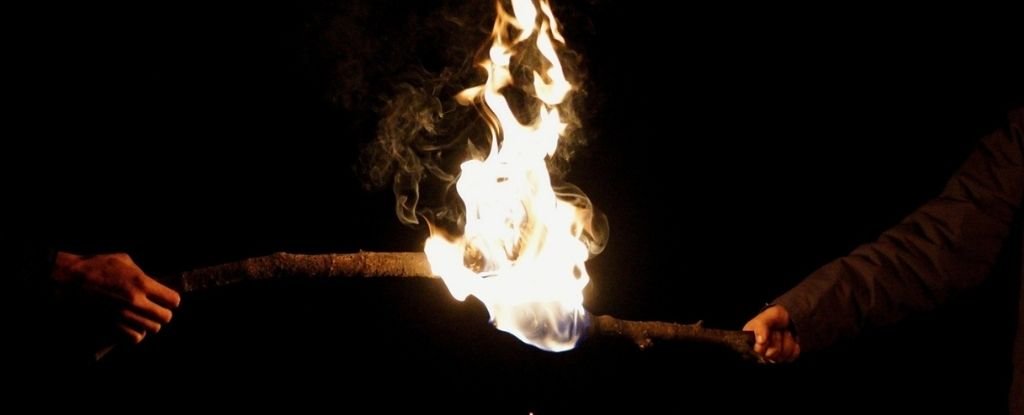
Scientists believe that the ability to control a wild fire to heat food, cook, heat the camp and keep predators away was discovered by early humans.If they are correct, this means that early human populations in Africa, Europe and Asia traded knowledge at least 400,000 year ago.This was well before modern humans dispersed out of Africa, and it is the first instance of cultural diffusion in archaeology.Katharine MacDonald, an archaeologist from Leiden University in The Netherlands, says that cultural diffusion was only started 70,000 years ago, when Homo sapiens started to disperse."But the records for the use fire seem to indicate that this occurred much earlier."Based on decades of research, the new analysis compares fire traces found at various archaeological sites in Europe, Israel, Asia and northern Africa.The authors claim that almost all of the locations they examined were not used for fire before 400,000 years ago.From that point, however, more sites were discovered with charcoal, charred bones and heat-altered sediments.This suggests that habitual fire use began in the second half the Middle Pleistocene.Although it is possible for all these hominin cultures to have figured out how to make fire, the rapid spread of this skill across the Old World strongly suggests that cultural diffusion was involved.The authors state that "multiple hominin populations persisted and left evidence for fire use, so it is unlikely that practices associated fire use were carried by one dispersing hominin population."It is not easy to identify fire traces hundreds of years later. We can't always be certain that what we find was actually a hominin-controlled flame.According to the authors, it is important to interpret "with caution" the lack of evidence about fire before 400,000 years. The current data, even after 400,000 years, are not complete, particularly in Africa and Eurasia where data on H. naledi and H. sapiens, Neanderthals and Denisovans and H. erectus is lacking.Nevertheless, fire-wrangling was not the only skill that quickly spread across hominin culture.They also used data from anthropology and primatology to show how ideas, behaviors and techniques spread across large distances through what was likely primitive social networks.A special type of stone-knapping technology known as the Levallois technique emerged in a very similar manner, approximately 100,000 years after the fire phenomenon.This technique was spread quickly across the Middle East and northwestern Europe in a shorter time frame than fire. It took the hand ax hundreds of thousands of year to travel from Africa to Europe.However, unlike fire, Levallois stone-knitting techniques would have required time to learn and teach. This suggests strong social interactions among hominin communities in the Old World. It is not just a matter of passing encounters.Although genetic evidence already shows that there was mixing among early humans of different species, the similarities in behavior and techniques between these populations suggests that they were in contact in many other ways.The authors write that "members of these subpopulations thus encountered each other repeatedly and over very lengthy timespans, providing an opportunity for cultural diffusion."If the team is right, it means that large-scale social networks existed long before humans arrived.Cultural diffusion is often viewed as a unique trait of our species. This hypothesis is controversial. The authors are willing to challenge it, if only for further discussion.They are passing the flame on like early humans hundreds of thousands years ago.This perspective was published by PNAS.
